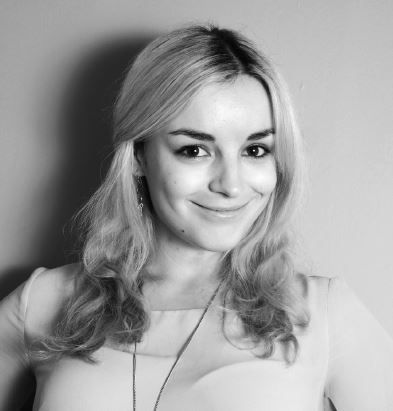Props can be a fantastic way to add interest and depth to a portrait. On the other hand, they can also be unnecessarily distracting, too busy, and have a negative effect on the composition.
Some photographers gravitate toward using props and may even rely on them too much. Other photographers seem to never use them, focusing on a clean portrait of the subject. A little balance can create a body of work that is far more compelling, with props used in the right way exactly when it is right to use them.
As amateur photographers, just as we often make mistakes with the exposure, framing, lighting, and locations that we choose before learning the better way, props are the same. You will likely make mistakes when attempting to use props for the first time.
Learning how to use props in the proper way will result in much more expressive portraits, which can reveal something about the subject or tell a story.
Today, we’ll look at how to effectively use props and when to leave them out of the frame.
Here is what we will cover in this article:
- How props can reveal the subject.
- How to tell a story through props.
- When to take the props out of the shot.
Recommended Reading: If you’d like to learn how to create amazing portraits, grab a copy of Photzy’s premium guide: The Art of Portrait Photography.
How Props Can Reveal the Subject
Portraiture often seeks to reveal or document the subject as an individual person. Whether you are photographing a celebrity to go alongside a glossy magazine interview or capturing a senior for their graduation present, the aim is the same. The image that you capture will stand as a testimony to that person for history.
The image does not just have to show the outward appearance of your subject; however, it is possible to reveal more about them, and to even capture their very essence. One of the quick and easy ways to do this is to utilize props to tell the viewer more.
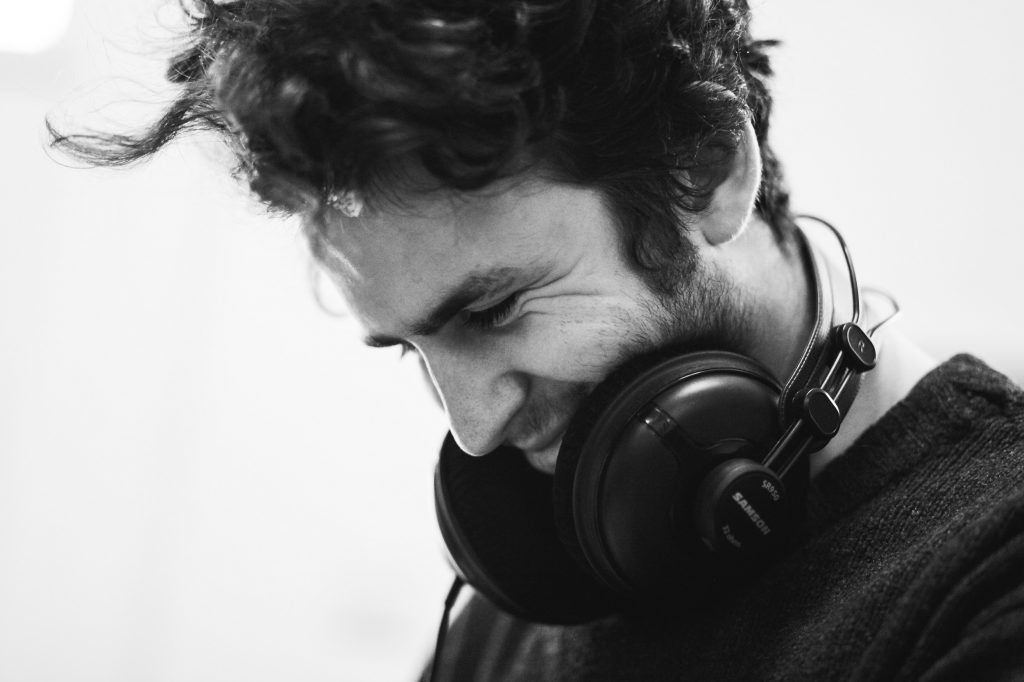
What might his job be?
Take this image, for example. The man in the portrait grins whilst wearing his headphones, which instantly makes us think that maybe this has something to do with his personality. He might be a DJ. The angle of his face and body lends credence to this idea by suggesting that he could be looking down at decks or a laptop.
This fills in information about the subject in a quick and easy way, without requiring a wider shot, the use of a background, or any caption.
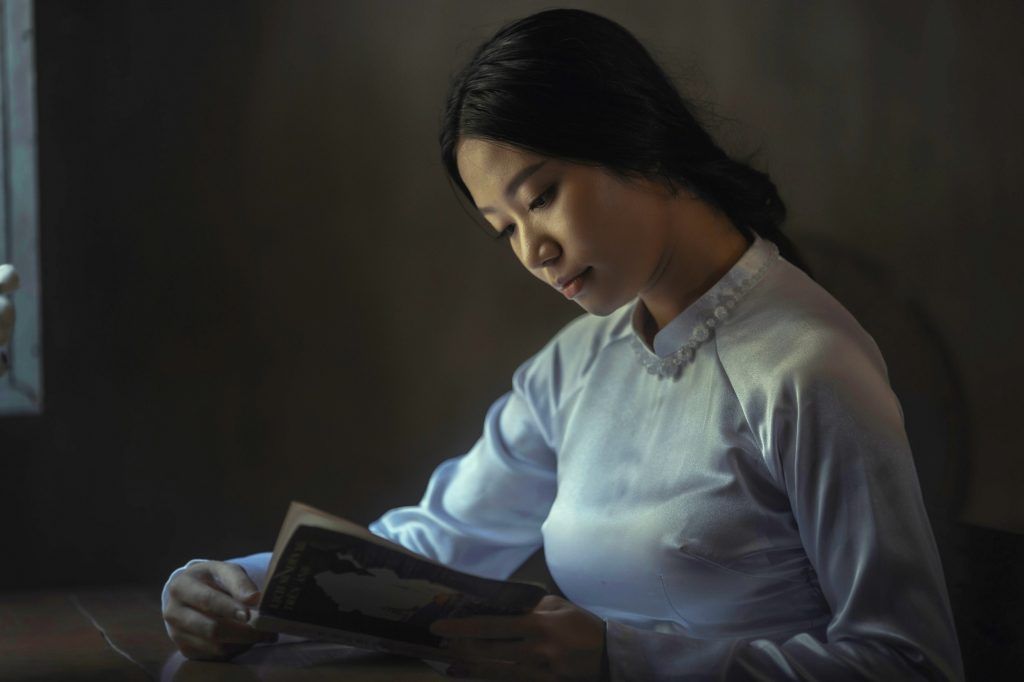
What do you think her favorite pastime is?
Next, study the way that the prop has been used in the photo above. It’s worth noting that anything in an image that is not part of the subject themselves or the background can be a prop. Even clothing can be a prop if used in a particular way. In this case, the clothing helps to reinforce the image of a studious young girl with a sense of tradition and respect for culture.
We get this primarily, however, from the fact that she sits seriously and quietly reading a book. It creates a very peaceful scene, and we begin to gather something about the personality of the model. We can imagine her being quiet and deferential, with a sweet smile and a warm heart. All of this comes from the simple fact of her reading a book, which looks traditional in nature.
Key Lesson: Props can reveal something about the subject without needing to add further explanation. They can demonstrate personality, profession, hobbies, and so on, allowing the viewer to learn more about the person in the frame. The pose of the subject can reinforce the idea presented, especially when using the prop in a natural way.
How to Tell a Story Through Props
Props can also be useful in telling a story, particularly through a metaphorical or allegorical sense. You might not get an entire story from one object in the image, but it can hint and reveal, inviting the viewer to read further into what they see.
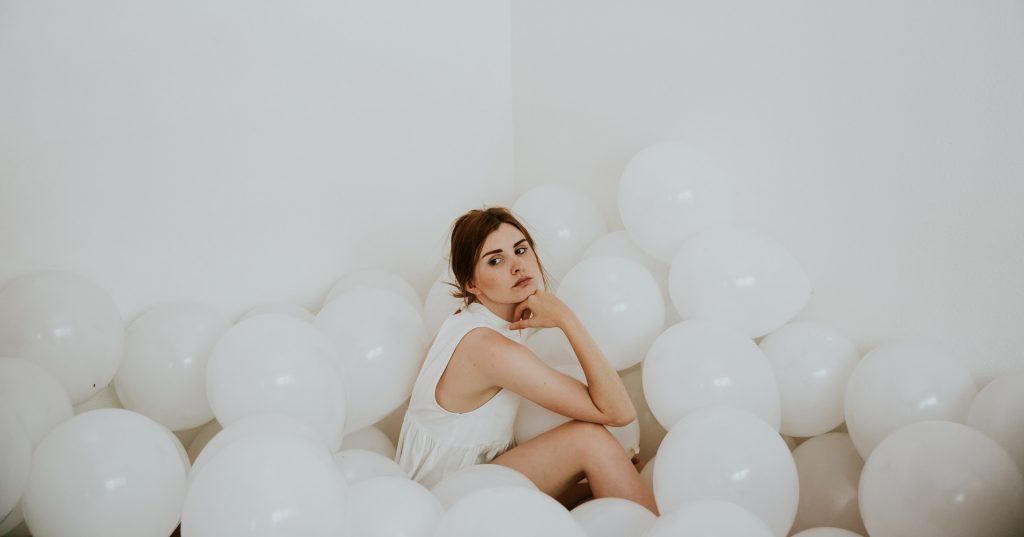
Can you describe the mood of this image?
Take this photograph as an example. There is a certain whimsical use of props in the form of a room full of balloons, which should feel playful – reminiscent of a party. However, the solemn look of the model combined with her dress, which camouflages her as one of the balloons, takes the image in another direction. There is some story here about being lost, drowned out, or perhaps of feeling lonely in the crowd.
Props can be useful in telling a story, particularly through a metaphorical or allegorical sense.
The meaning of an image is often subjective and dependent on the reader, especially when we move away from factual photography and into the territory of fine art. This portrait is not simple documentation of a moment in time or a person that exists; it is trying to convey a mood and create a different feeling within us.
Would you say that this image feels happy or sad? Do we learn as much about this model as we did in the previous images, where props told us more about them?
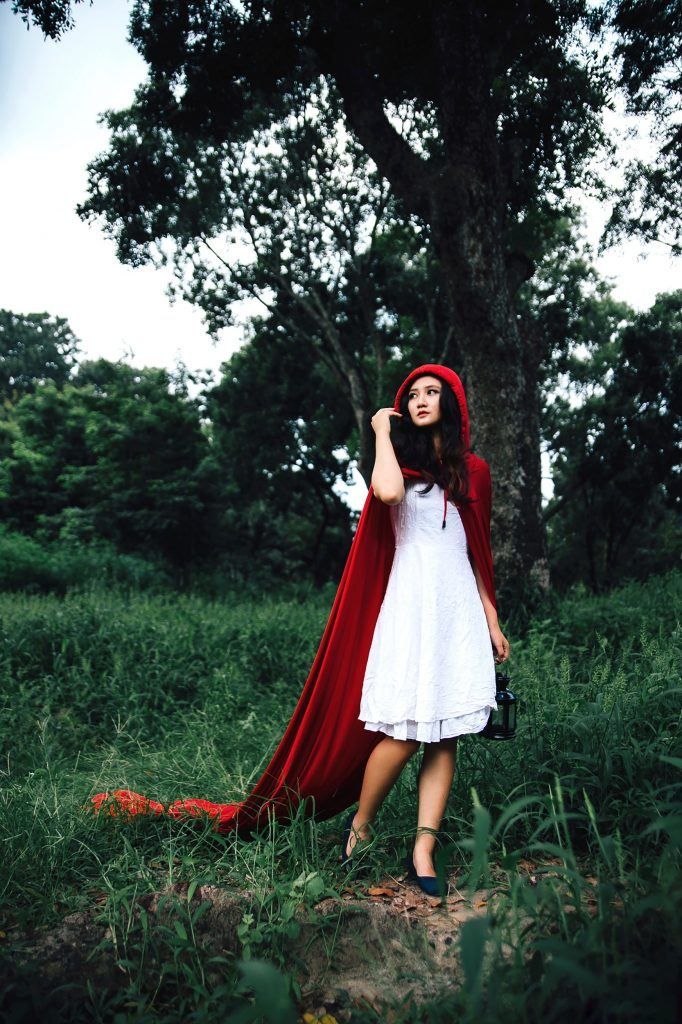
You can probably guess her name!
In this example, we have another story being told – quite literally. Anyone who is familiar with the fairytales of Western culture would immediately recognize that this image portrays Little Red Riding Hood, with her famous attire. But even though the cloak can be counted as a prop, there is another element here adding to the story: the lantern.
Putting props into an image does not mean that they have to take up a lot of space, or even that they must be prominent within the frame. Sometimes, it is the addition of smaller details that creates the whole story. Now we can imagine Little Red Riding Hood venturing deeper into the dark woods, and perhaps even having to navigate them in the night in order to get to her grandmother’s house.
Even if you did not know the fairytale, you can tell a lot about the story being told here: a person traveling, moving through the woods in darkness, wearing a heavy cloak to protect herself from the elements. All of this is told within the frame.
Key Lesson: A prop can assist in telling a story, whether it is prominent within the frame or one of a number of small details. It can help to convey a certain mood or atmosphere, especially in conjunction with the portrait. Here, you can write emotions and even inner thoughts on the model’s face.
Recommended Reading: If you’d like to learn how to create amazing portraits, grab a copy of Photzy’s premium guide: The Art of Portrait Photography.
When to Take Props Out of the Shot
We have explored that there is a right and proper way to use props. This means, logically, that there is also a wrong way to use them.
This does not necessarily mean that an image will be without value if the props are used incorrectly, but it can certainly give it a lesser impact.
Balance is important. If you begin to find that your portrait is more about the prop than it is the subject, then you are veering away from it being a portrait at all. Remember that a prop should support your subject and the story you are telling, rather than overwhelm it.
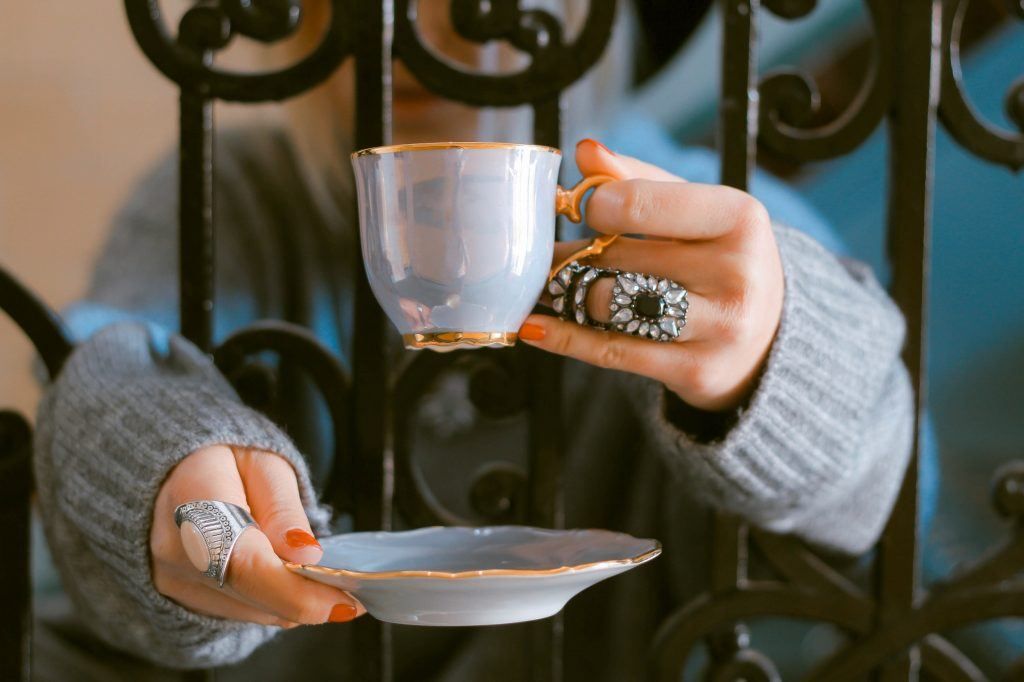
Who is pictured here?
The image above is a fantastic shot of the cup and saucer, but not so great as a portrait. Of course, there are ways in which you could argue it does the job; for example, if this were a woman who was famous for wearing large rings and drinking tea, then it would be a great portrait summing up her essence. But generally speaking, it is clear that this example is not really a portrait at all.
There are also times when a prop may simply be an unnecessary distraction. As photographers, we can be tempted to bring all sorts of things to the set because they look interesting. But ask yourself, what do they really tell us about the subject or the story? What do they bring to the table?
There are also times when a prop may be an unnecessary distraction.
A good rule of thumb is that if you can take the prop out of the image without changing its meaning or mood at all, then you ought to take it out.
Key Lesson: Props are not always necessary and don’t always support the image. Consider whether you would have a stronger portrait by removing them.

Photograph by Rhiannon D’Averc
Conclusion
Props can be really useful for:
- telling us something about the subject of a portrait,
- strengthening a story or mood within the portrait, and
- adding context and character.
However, they should be removed from the frame in cases when:
- the image does not feel stronger or have a clearer mood when the prop is taken away, or
- the prop overwhelms the portrait.
Self-Check Quiz:
- What can you convey about a person through a prop?
- How would you demonstrate what a celebrity is famous for through props?
- How can props still convey a story when they are only a small detail in the frame
- Why is a photograph of a teacup not a good portrait?
- Under what circumstances would a photograph of a teacup become a good portrait?
- How can you tell if a prop is not helping an image?
Shooting Assignment:
Take some portraits with the use of props. Choose props that are meaningful to your subject – something related to their hobby, their work or field of study, or something that they use on a regular basis.
Take a number of different compositions, and in each case shoot an image both with the prop and without it. Later, review the images side by side.
Which is stronger, the shot that uses the prop or doesn’t? Why?

